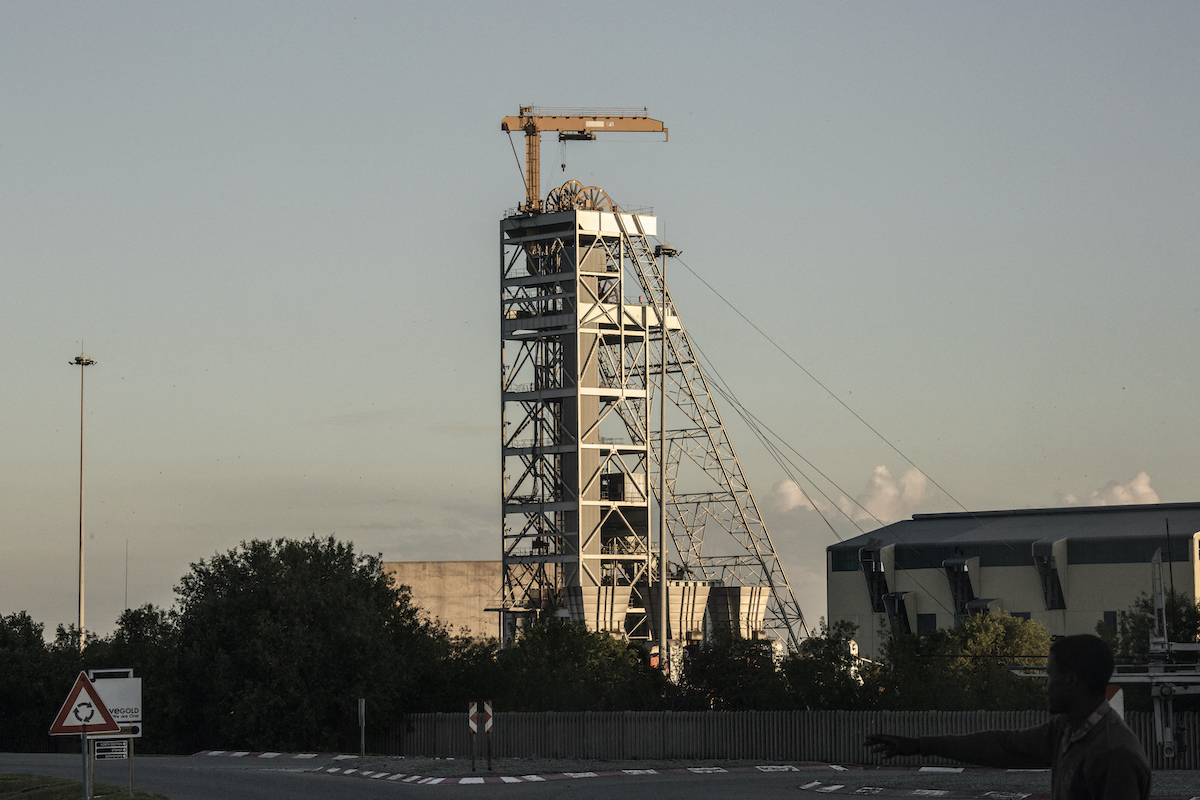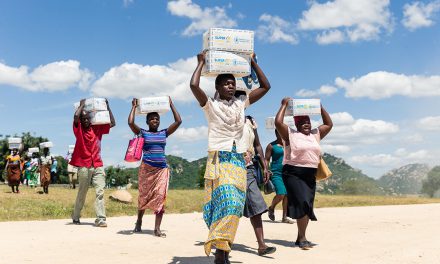Zambia seeks debt relief while in the throes of its August 2021 election campaign
Zambia has a long, complex relationship with the International Monetary Fund (IMF). In November 2020, it defaulted on a payment of $42.5-million interest on its dollar-denominated Eurobond. The country now has to pursue assistance from the IMF.
The IMF was designed after World War II to stabilise the international monetary system and generate development through providing finance for member states. When countries face debt crises, the IMF presents structural reform proposals, which typically include government spending cuts and liberal trade agreements. These are designed to create a competitive business environment. To attain funding, countries must be willing and able to conform to these conditions.

Edgar Chagwa Lungu, President, Republic of Zambia, speaks to the 74th Session of the General Assembly at the United Nations headquarters in New York on September 25, 2019 in New York. (Photo by TIMOTHY A. CLARY / AFP)
If the Zambian government agrees to cut spending, however, it could have negative implications for the ruling party’s electoral performance. This is because civil servant wages are estimated to account for up to 40% of total government expenditure, while debt servicing accounts for approximately 50%. Public services and social spending take up the remaining 10%.
Debt politics
In 1983, Zambia participated in the IMF’s Structural Adjustment Program (SAP) in response to its inability to repay loans, partly due to rising inflation, alongside declining copper prices and gross domestic product (GDP) per capita levels. The first SAP (1983-1987) saw Zambia engage in reforms that were meant to promote economic stability and GDP growth through trade liberalisation and export diversification, which would increase its ability to service debt. Government spending and subsidy cuts were meant to signal fiscal discipline to attract foreign direct investment.
Paradoxically, during this period, GDP remained stagnant, inflation rose, and budget deficits increased. Instead of producing economic dynamism, the SAP measures appeared to result in social unrest, leading to the government abandoning the first SAP. However, these outcomes could also be attributed to the weakness of the copper price at the time, halting the reform process. Copper is Zambia’s primary export and only major industry.
During the 1990s, Zambia participated in several IMF and World Bank programmes with varying conditionalities:
- The World Bank’s 1991: Economic Reform Credit
- The World Bank’s 1992: Privatisation and Industrial Reform Credit (PIRC I)
- The IMF’s 1992-95: Rights Accumulation Programme (RAP)
- The World Bank’s 1993: PIRC II,
- The World Bank’s 1994: Economic and Structural Adjustment Credit (ESAC I)
- The World Bank 1995: Economic Recovery and Investment Project (ERIP)
- The IMF’s 1995: Enhanced Structural Adjustment Facility (ESAF)
- The World Bank’s 1996: (ESAC II)
- The World Bank’s 1999: Structural Adjustment Fund
- The IMF’s 1999 ESAF II
Common to all these programmes was the drive for trade liberalisation, cutting subsidies and public spending. Privatising national assets was similarly promoted after a period of chaotic nationalisation (especially of the copper mines). In the early 1990s, for instance, the Zambian Consolidated Copper Mines (ZCCM) was privatised. These programmes granted the IMF and World Bank a great deal of control over economic policymaking, and some control over the country’s domestic political situation. The spending cuts contributed to the current trust deficit between Zambians and the IMF, with local politicians attributing blame for poor conditions to the IMF.
The IMF perceived that its structural reform policies of the 1990s increased macroeconomic stability. Meanwhile, these reforms were subject to the volatile Zambian politics of the day. Structural reform became a divisive political issue, with different interest groups ending up as winners and losers. In the early 2000s, Zambia undertook further structural reform under the Enhanced Highly Indebted Poor Countries Initiative (HIPCI), guided by the Poverty Reduction Strategy Paper (PRSP). A 2004 report by the IMF noted that these interventions, along with Zambia’s cooperation, reduced reliance on the copper sector and achieved some degree of poverty alleviation. As a result, in 2005, the IMF extended 100% multilateral debt relief under the HIPCI.
Copper price fluctuations
As seen in the graph below, the copper price rose gradually after 2005 before crashing sharply from 2008-2009, reflecting the impact of the global financial crisis. The recovery of the copper price, along with GDP per capita, though, was rapid. Subsequent mismanagement, misguided tax regimes, and a sharp decline in the copper price saw GDP per capita crash between 2013 and 2016. Since 2018, as Zambia’s debt to GDP ratio increased and further misguided tax and budget policies have been instituted, GDP per capita has again declined.
According to the Zambian Ministry of Finance, the country’s total debt servicing costs as a percentage of government spending increased from 20% in the 2018 budget to 27% in the 2019 budget, 34% in the 2020 budget and 39% in the 2021 budget. The August 2019 Joint World Bank-IMF Debt Sustainability Analysis for Zambia indicated that the country was at high risk of debt distress. Its debt burden is unsustainable. In 2020, Zambia’s total external debt stock amounted to 52% of GDP, while rating agencies Fitch and Moody’s both downgraded Zambia to a negative outlook. Currently, Moody’s outlook for Zambia has not changed, remaining stable with a Ca or speculative credit rating, while Fitch upgraded its credit rating to CCC from CC.
At the end of 2020, public external debt amounted to $12.74 billion, according to the Zambian Finance Ministry. The debt includes:
- Approximately $3 billion to Eurobond holders.
- Almost $3 billion to various Chinese entities as of 2019.
- $2.9 billion to commercial lenders.
- $3.5 billion to bilateral lenders.
- Approximately $2.1 billion to multilateral lenders.
Zambia’s inflation has been running above 20% for the fourth consecutive month since December 2020, and food price inflation peaked at 27% during the same period. With Zambia going to the polls on 12 August 2021, negotiations with the IMF are complex and it is unclear whether the two parties will strike a deal before then.
China’s role
Further complicating matters is China’s role in the Zambian economy. Many of Zambia’s loans and debt agreements with China (and some Western commercial lenders) are opaque. This problem is well noted by both the IMF and the country’s other creditors. As a result, debt transparency is a major requirement for the country to receive debt relief. While questions have been raised as to whether Chinese lenders would be willing to agree to any potential debt restructuring for Zambia, the China Development Bank reportedly agreed to a delay on interest payments. This is in addition to two Chinese bilateral lenders pledging debt relief through the G20 Debt Service Suspension Initiative (DSSI).
Commercial lenders outside of China, however, are unwilling to agree to any form of debt relief or debt service suspension that would allow Zambia to service debts owed to Chinese entities. Additionally, under a principle of equal treatment, lenders expect that if a loss is to be taken, all those who loaned money to Zambia should take it together. However, due to the lack of debt transparency, Zambia faces deepening creditor distrust. Any agreement will therefore require the IMF and Zambian government to agree to a clear and transparent adjustment programme, with macroeconomic and political commitment from Zambia, detailing amounts owed, as well as to whom and by when they can reasonably expect to be paid.
The graph below shows that between 2000 and 2008, as Zambia’s debt to GDP ratio reduced from its 2000 level, GDP per capita increased. Debt to GDP increased again during the global financial crisis of 2008 to 2009, but the general trend continued through to 2013. However, since then, the debt to GDP ratio and GDP per capita have not tracked closely with each other. The previous graphs show that Zambia’s GDP per capita tracks more closely with the copper price.
The recent copper price spike, due to the growing demand for renewable energy and electric transportation, muddies the debt waters. This demand is predominantly driven by global commitments to addressing climate change, which has resulted in waves of green infrastructure spending by the United States, China and the European Union. Meanwhile, capital investment in copper exploration and production is decreasing and is likely to result in an acute supply shortage in the medium term.
The spike in the copper price, in conjunction with structural reform, present an opportunity for Zambia to diversify its economy and spur development. However, this cannot happen without debt transparency, which hides the scale of loans owed (particularly to Chinese lenders). Zambia’s inability to repay loans has generated risks that China could effectively seize copper assets. This would result in increased Chinese control over the global copper supply.
Opportunities abound, but will they be taken?
In short, a deal between Zambia and the IMF could include affordable financing through a zero or low-interest loan, in addition to technical support for structural economic reforms. However, this would require Zambia to engage in a process of debt transparency. The IMF conditions presented, however, are unlikely to be accepted by the Zambian electorate ahead of the upcoming elections. It is, however, in the longer-term interests of politicians to prioritise the economic wellbeing of their people above political interests. Although it is ultimately in the interests of the electorate for Zambia to finalise a deal with the IMF as soon as possible, it is possible one may only be reached after the August elections.










